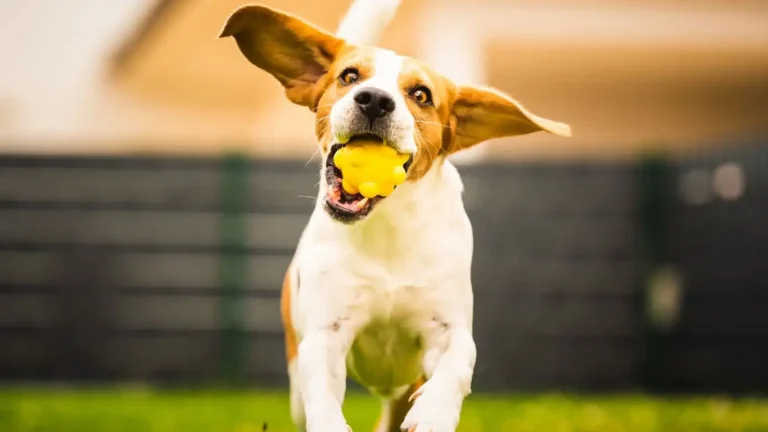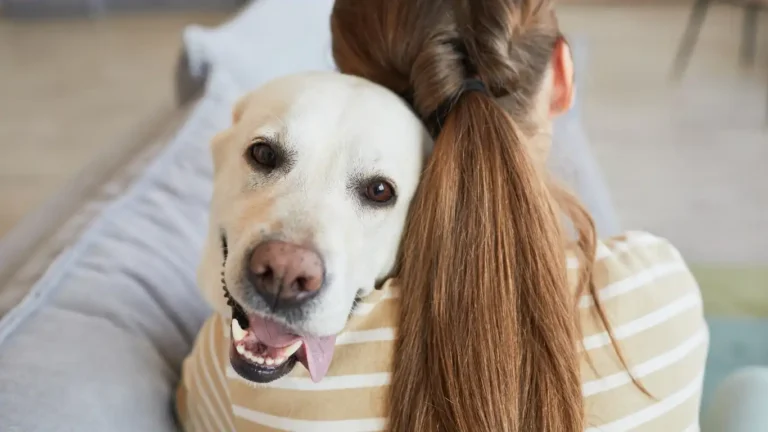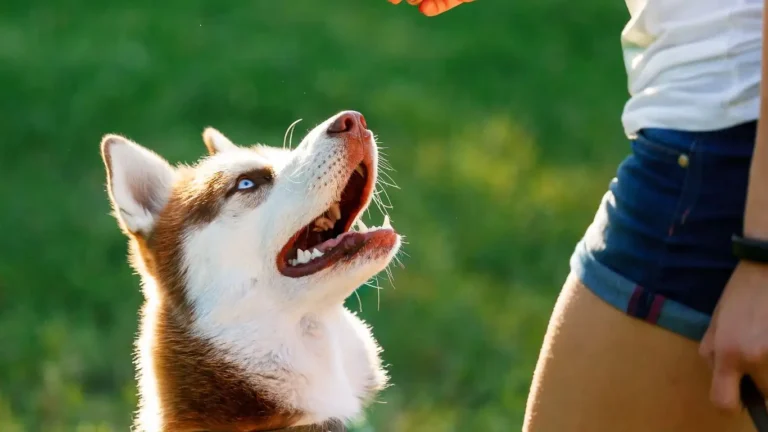How to Train Your Dog to Be Patient When Waiting for Food: Effective Tips & Techniques
Training a dog to be patient while waiting for food is a valuable skill that goes beyond just mealtime. If you’ve ever been in the kitchen, preparing your own meal, only to have your dog staring up at you with those big, pleading eyes, you know exactly what I’m talking about. It’s one of those behaviors that can be both adorable and frustrating, especially if your dog constantly jumps up, barks, or rushes towards the food bowl as soon as the scent hits the air. As a Canine-Assisted Therapy Trainer with years of experience, I’ve worked with a variety of dogs to teach them patience and self-control. In this article, I’m going to share with you practical, step-by-step tips on how to train a dog to be patient when waiting for food. Whether you’re working with a puppy or an adult dog, this training method will not only help you get a calmer, well-behaved dog at mealtime, but it will also strengthen your bond with your furry friend.
Why Teaching Patience is Important
Before diving into the ‘how-to’ part of the training, let’s talk about why teaching your dog to be patient is so crucial. As a Canine-Assisted Therapy Trainer, I’ve seen firsthand how helpful patience is for both the dog and their handler. It builds trust, improves communication, and even enhances your dog’s overall behavior, both at home and in therapy settings.
Imagine your dog at mealtime, calmly sitting in their spot without jumping up or barking. This level of control and composure isn’t just about avoiding chaos in the kitchen—it’s a foundation for teaching your dog self-discipline in other areas of their life, too. Dogs who learn patience are also better able to handle stressful situations, making them more adaptable and calm in new environments or with new people.
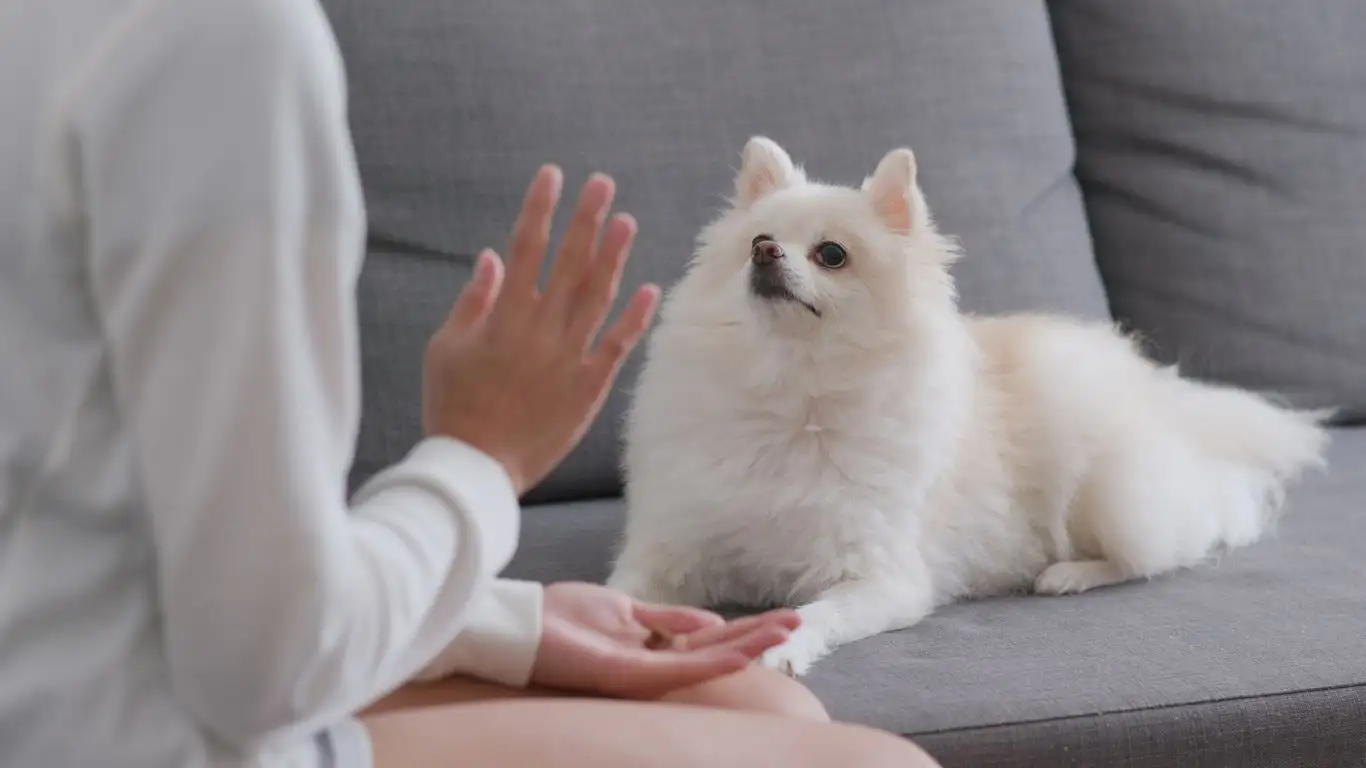
The Basics of Canine Patience Training
Now that we’ve covered why it’s important, let’s get into how to train a dog to be patient when waiting for food. This method involves teaching your dog to control their impulses and focus on you while waiting for the reward (in this case, food). The key is consistency, patience, and understanding your dog’s individual learning pace.
Start by setting up a calm environment. Avoid distractions like loud noises or other pets that may steal your dog’s attention. The goal is to create a scenario where your dog can focus solely on you and the task at hand.
- Step 1: Set up a consistent routine—dogs thrive on routine, and having a predictable mealtime setup will make the training smoother.
- Step 2: Have your dog’s food ready and in sight. Don’t serve it to them just yet. The anticipation will build their patience.
- Step 3: Use a command like “sit” or “stay” and reward your dog for following the command.
How to Use Positive Reinforcement in Patience Training
One of the most effective ways to train a dog is through positive reinforcement. Dogs love food, so we can use that love to our advantage! The key is to reward calm behavior and good choices. It’s tempting to give in to your dog’s pleading stares, but consistency is key. Every time your dog waits patiently, even for just a few seconds, praise them and offer a treat. Over time, this positive reinforcement will strengthen the desired behavior.
While training, it’s important to remember that dogs don’t always understand what you want the first time. It takes time and repetition, so be patient with the process. Positive reinforcement creates an environment of trust and respect, which helps your dog learn not just to wait for food but also to follow commands in different scenarios.
- Tip 1: Use high-value treats that your dog loves. The more enticing the reward, the more motivated your dog will be.
- Tip 2: Start with short waiting periods and gradually increase the time. Build up their patience slowly.
- Tip 3: Keep training sessions short (5-10 minutes) to avoid frustrating your dog.
The “Place” Command: A Game Changer for Patience
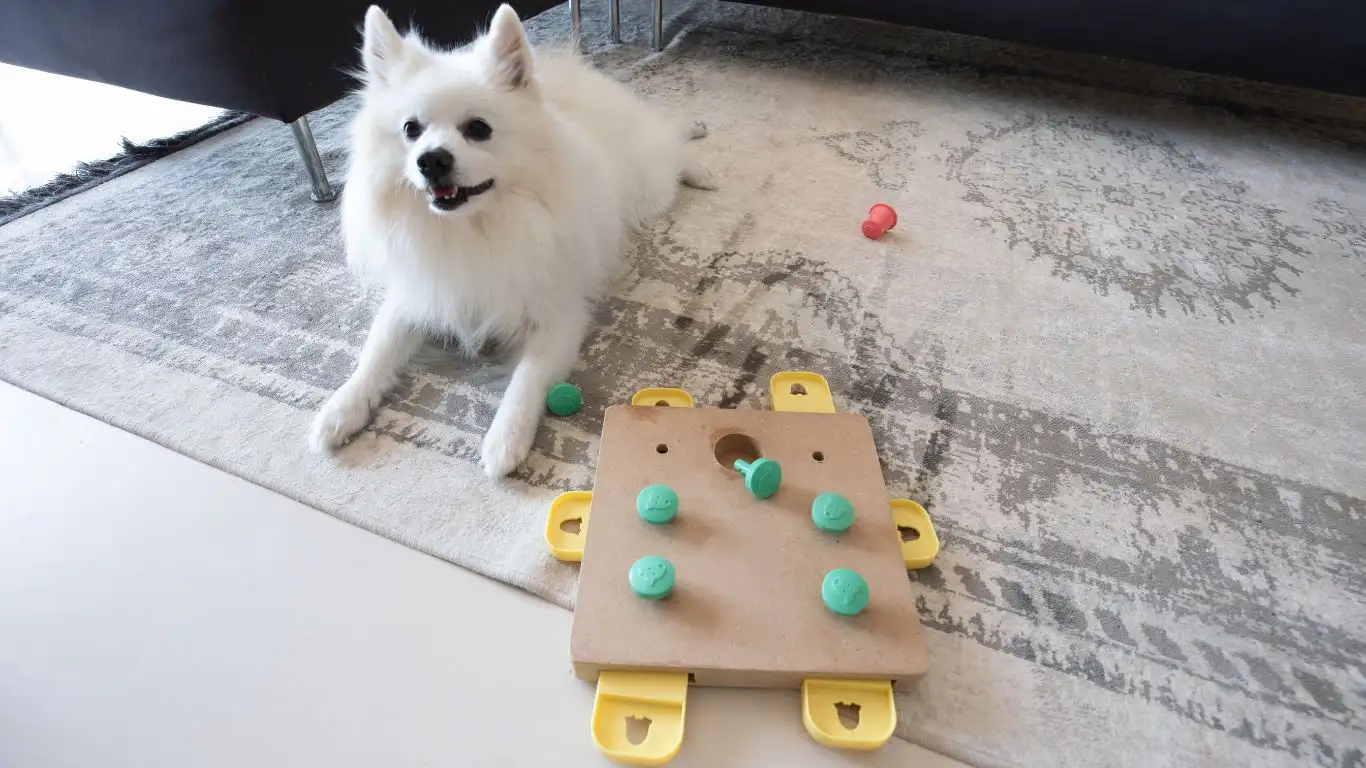
One of my favorite commands to use when teaching patience is the “place” command. This is where you teach your dog to go to a specific spot—like their bed or mat—and remain there until you release them. Not only does this give your dog a clear, defined space where they should stay, but it also trains them to remain calm and composed when food is involved.
Here’s how I introduce the “place” command during mealtime:
- Step 1: Start by getting your dog familiar with their place mat or bed. Use treats to encourage them to go to the spot and settle down.
- Step 2: Once they are comfortable in the place, ask them to stay there while you prepare their food. This is the first step in training them to wait patiently.
- Step 3: If your dog gets up, gently guide them back to their spot. Over time, they will learn that the “place” is their designated spot, and they need to stay there until they are given the signal to eat.
The beauty of the “place” command is that it can be used in many situations, not just when waiting for food. It’s a versatile command that helps reinforce the concept of patience and builds your dog’s self-control.

Building Longer Patience Periods with Distractions
At this point, your dog should be understanding the basics of waiting for their food. However, the next challenge is to extend their patience even further—especially when distractions come into play. If your dog can stay calm and composed when there’s a lot going on, you know you’re on the right track. But this takes a bit more work, so let’s dive into how to gradually introduce distractions and reinforce patience.
One thing I’ve learned in my years as a Canine-Assisted Therapy Trainer is that dogs don’t learn patience in one go. It’s a gradual process, and distractions can easily set back their progress. Start by introducing small distractions while your dog is in the “place” or “stay” position, and work your way up to bigger challenges. By doing this, you’re teaching your dog that even when there are exciting or distracting things happening, they need to stay focused and calm.

Types of Distractions to Introduce
When it comes to distractions, the idea is to keep it simple at first. Don’t go throwing a party in your kitchen with loud music and guests all around! Instead, introduce distractions in small, manageable increments. For example:
- Distraction 1: Moving around while your dog stays in position. Walk around your kitchen, preparing food or doing some light cleaning, but don’t give them the reward just yet.
- Distraction 2: Handing them the food bowl and then moving it away a few inches before bringing it back. This tests their impulse control and teaches them patience in the face of excitement.
- Distraction 3: Asking your dog to wait while other people walk around or perform activities near them.
Each of these distractions should be introduced slowly. If your dog breaks their focus, don’t get discouraged! Simply reset them and try again. Keep your tone calm and consistent, which will help your dog stay in the zone and avoid confusion.
Adding Movement and Action for Extra Challenge
As you move along in your training, you’ll notice your dog’s ability to focus and stay in position might improve. At this point, you can start adding more movement and action. This helps replicate real-life situations where they’ll need to hold their composure, such as when you’re preparing food in a busy household or when other dogs are in the room.
One of my favorite ways to add movement into the training is to add a “sit-stay” with small steps of distance between you and your dog. Start with sitting close to them, rewarding calm behavior, and gradually increase the distance. This reinforces the idea that staying in position, no matter how far away you are, is always the right choice.
- Tip: Don’t rush the process. The more you build up these small successes, the better prepared your dog will be to handle bigger distractions down the road.
Using the “Leave It” Command to Reinforce Patience
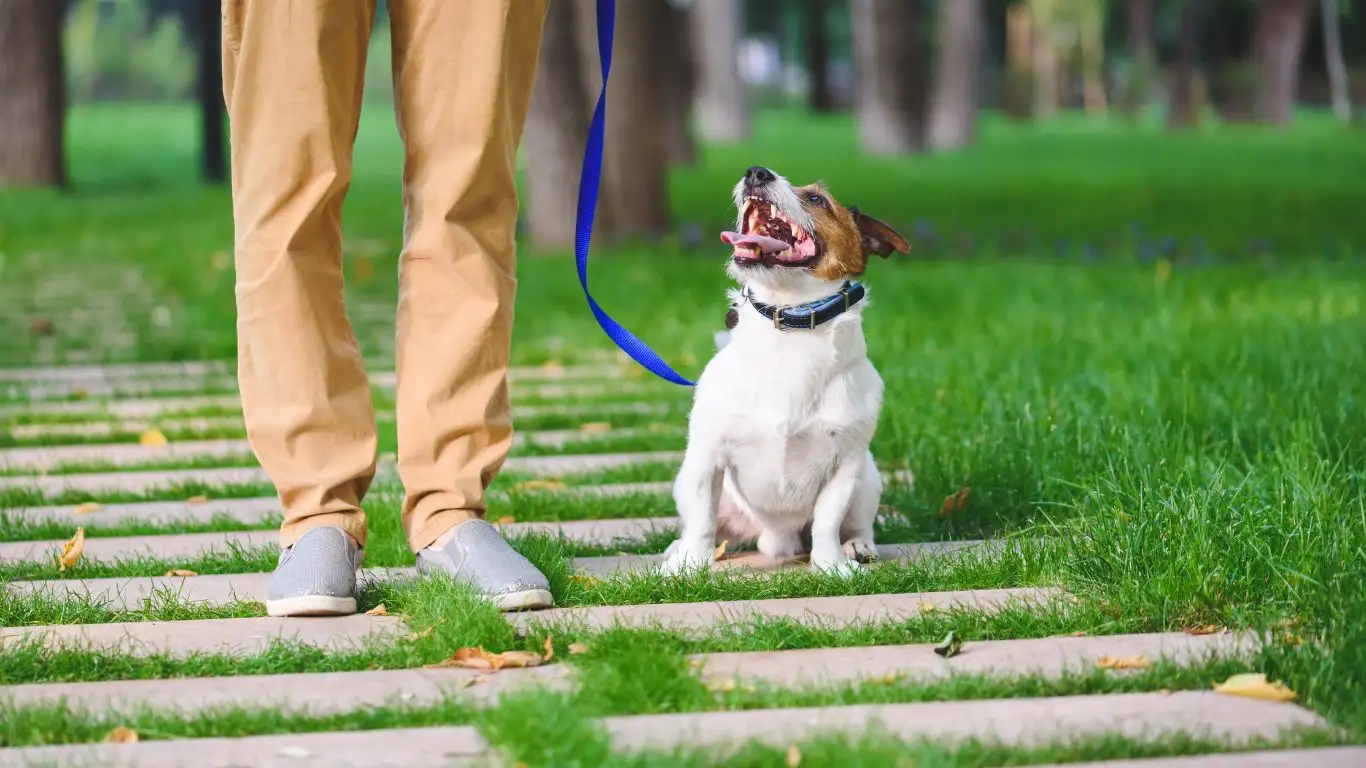
The “leave it” command is another fantastic tool for reinforcing patience. This command helps teach your dog self-control when they’re tempted by food or objects they want to grab. When your dog knows the “leave it” command, they’ll be less likely to rush towards the food when it’s time for a meal.
Here’s how to introduce the “leave it” command into your training regimen:
- Step 1: Hold a treat in your hand, close your fist around it, and show it to your dog. When they try to get the treat, calmly say “leave it” and wait until they stop trying to take the treat.
- Step 2: When your dog backs off, reward them with a different treat. This is a classic example of positive reinforcement in action.
- Step 3: Once your dog gets the hang of this with your hand, try the same with the food bowl. Place the food bowl down, and say “leave it” while encouraging your dog to stay calm. If they don’t rush towards the food, reward them with praise and another treat.
The beauty of “leave it” is that it translates into many areas of life, not just food. It teaches your dog impulse control, which is key for helping them become well-behaved in any situation.
Understanding Your Dog’s Progress and Adjusting Expectations
As with any training, it’s important to remember that every dog learns at their own pace. Some dogs might get the hang of patience quickly, while others may need more time. It’s crucial not to compare your dog’s progress to others. When I first started training my own therapy dogs, I had to adjust my expectations to match each individual dog’s learning style and personality. Patience is key—both for you and your dog!
If you find that your dog is struggling, don’t be afraid to take a step back. Lowering the difficulty level and going back to basics can sometimes make a world of difference. Celebrate the small wins! Every time your dog manages to stay calm for just a little bit longer, it’s a victory.
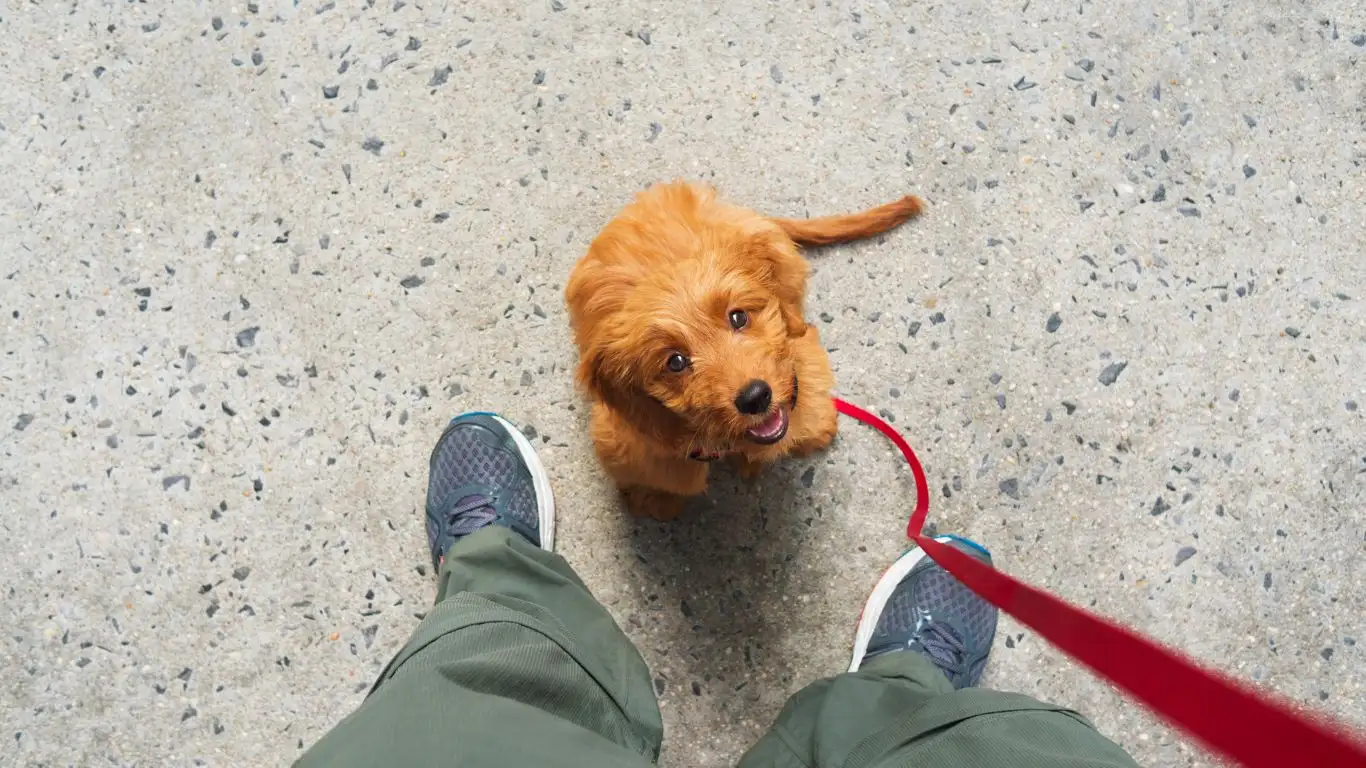
Also, make sure you’re consistent. Dogs thrive on consistency, and if you regularly reinforce the behavior you want to see, your dog will pick up on it. But if you’re inconsistent, they’ll be confused about what’s expected of them. Stick to your training plan, even if it feels like progress is slow. Every little step counts!
Troubleshooting Common Challenges in Patience Training
By now, your dog is likely starting to show some serious improvements in their ability to wait patiently for food. But of course, training isn’t always a smooth ride. There will inevitably be bumps along the way. It’s totally normal for dogs to get distracted, frustrated, or even push boundaries. As a Canine-Assisted Therapy Trainer, I’ve seen it all, and I can assure you that most of these challenges are just part of the process. So let’s talk about some common obstacles and how to overcome them.
Problem 1: Impulse Control and Overexcited Behavior
One of the most common issues that come up when training a dog to wait patiently for food is impulse control. Some dogs just can’t help themselves—they get excited, and their instincts push them to jump or rush toward the food bowl. This is especially common in younger dogs or breeds with higher energy levels. However, with the right techniques, this issue can be managed.
The key here is to teach your dog that impulse control is rewarding. This can be tough, but it’s all about consistency. In my experience, the “sit-stay” and “place” commands are your best friends in these situations. If your dog is overly excited, take a step back and focus on reinforcing these commands in a calm environment before moving on to the more challenging distractions.
- Tip: If your dog starts jumping or acting out, take a short break. Step back, calm down, and then return to the training at a slower pace. Progress might not always be linear, and that’s okay.
- Tip: Reward your dog for staying in position even for just a few seconds before adding distractions. Gradually build up from there.
Problem 2: Inconsistent Behavior at Mealtime
Sometimes, a dog that was doing great with patience training suddenly becomes inconsistent, especially around mealtime. This is often a sign that something has changed in their environment or routine, like a change in schedule, a new person in the household, or even a new pet. Dogs are creatures of habit, and any variation can affect their behavior.
As a trainer, I always remind myself and my clients to pay attention to these external factors. If your dog starts showing signs of impatience again, try to identify what’s different. In many cases, getting back to the basics—reintroducing the “place” command or asking for a “sit-stay”—and reinforcing the training routine can bring back consistency.
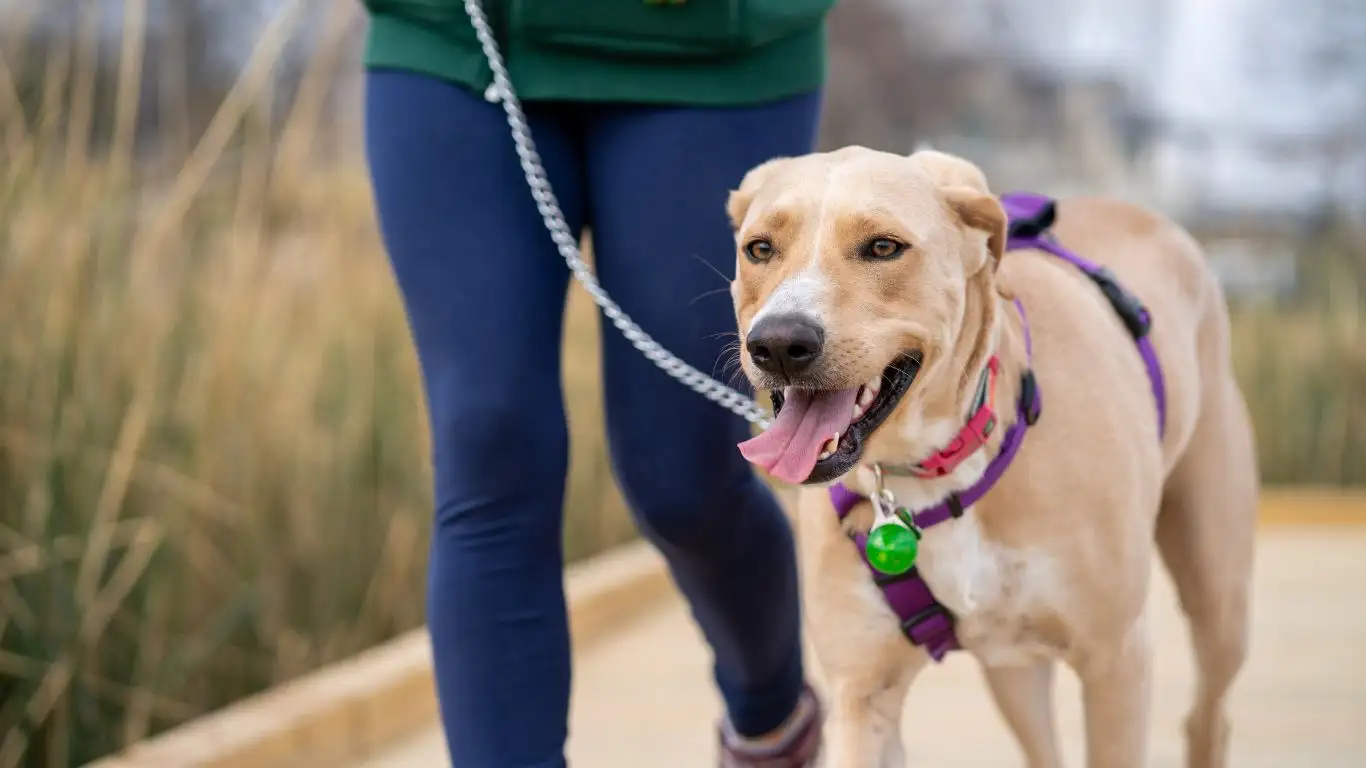
Don’t be afraid to revisit the initial stages of training, even if it feels like a step backward. It’s common for dogs to need a refresher now and then, especially as they grow and change. If this happens, just keep a calm and consistent approach, and your dog will eventually return to their old, patient self.
Problem 3: Other Pets Disrupting Training
If you have multiple dogs or other pets in the house, mealtime can get a little chaotic! Other animals might distract your dog or encourage unwanted behaviors like barking or rushing toward the food. In these situations, it’s crucial to give each pet the attention they need individually during training sessions.
One strategy I’ve found to be especially helpful is creating a designated feeding space for each pet. This helps eliminate competition for food and makes it easier to focus on the patience training process. If you have more than one dog, consider training them separately at first so they can focus on the task at hand without the added distraction of other pets.
And of course, consistency is key. If your dog sees other pets getting food while they’re asked to wait, they might start feeling frustrated. It’s important to reward patience every time to make sure they understand that waiting calmly is the way to go.
Building a Routine for Success
The most successful training sessions are the ones that become part of your dog’s daily routine. Dogs love structure and predictability, so setting up consistent training times and expectations will help solidify your dog’s patience over time. Here are some tips for building a successful routine:
- Step 1: Train at the same time every day. This creates a sense of routine and makes it easier for your dog to understand what’s expected of them.
- Step 2: Keep training sessions short and sweet—5 to 10 minutes works best for most dogs. Longer sessions can lead to frustration or loss of focus.
- Step 3: Gradually add more challenges as your dog becomes more skilled. You don’t need to rush, and it’s important to make sure they’re ready before adding new distractions.
Dogs thrive on consistency, and making patience training part of your daily routine will ensure that it becomes second nature to them. And as a bonus, your dog will start to generalize this patience into other areas of their life, too. For example, they’ll become more patient when waiting for walks or other fun activities, which can lead to a calmer, better-behaved dog overall.
Why Patience Matters Beyond Mealtime
When we teach dogs to be patient at mealtime, we’re not just helping them wait for food—we’re giving them the tools to be more self-controlled in other aspects of life. Patience is a cornerstone of good behavior, and once your dog understands how to wait for food, you’ll see improvements in other areas too. From greeting guests calmly to walking nicely on a leash, patience helps your dog develop impulse control that can be applied to many different situations.
Additionally, teaching patience can be incredibly helpful in therapeutic settings. I’ve worked with therapy dogs for years, and one thing I’ve noticed is that dogs with a solid foundation of patience tend to be more relaxed and responsive during sessions. They can focus better, engage with clients more effectively, and even provide more comforting interactions because they’re not driven by the urge to rush or get distracted. The same principle applies to any dog, whether they’re a therapy dog or your own pet.

References
For additional tips and resources on dog training and behavior, check out the American Kennel Club at akc.org.
Disclaimer
The information provided in this article is for educational purposes only. While the training methods shared here are based on proven techniques, each dog is unique, and results may vary. If you’re struggling with your dog’s behavior or if you have concerns about their training progress, it’s always a good idea to consult with a professional trainer or a veterinarian for tailored advice and guidance.

